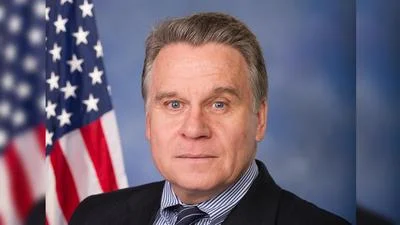The President's 2016 Budget is designed to bring middle class economics into the 21st Century. This Budget shows what we can do if we invest in America's future and commit to an economy that rewards hard work, generates rising incomes, and allows everyone to share in the prosperity of a growing America. It lays out a strategy to strengthen our middle class and help America's hard-working families get ahead in a time of relentless economic and technological change. And it makes the critical investments needed to accelerate and sustain economic growth in the long run, including in research, education, training, and infrastructure.
These proposals will help working families feel more secure with paychecks that go further, help American workers upgrade their skills so they can compete for higher-paying jobs, and help create the conditions for our businesses to keep generating good new jobs for our workers to fill, while also fulfilling our most basic responsibility to keep Americans safe. We will make these investments, and end the harmful spending cuts known as sequestration, by cutting inefficient spending and reforming our broken tax code to make sure everyone pays their fair share. We can do all this while also putting our Nation on a more sustainable fiscal path. The Budget achieves about $1.8 trillion in deficit reduction, primarily from reforms to health programs, our tax code, and immigration.
The U.S. Commerce Department plays a critical role in promoting U.S. economic growth and providing vital scientific and environmental information. To support this mission across its diverse bureaus, the Budget provides $9.8 billion in discretionary funding for Commerce. This funding level will enable key investments in areas such as promotion of exports and foreign investment; development of weather satellites; wireless and broadband access; and research and development to support long-term economic growth. At the same time, efficiency gains, such as streamlining operations in the Census Bureau and reductions in lower-priority activities enable Commerce to achieve administrative and programmatic savings.
Funding Highlights: The President’s FY 2016 Budget provides $9.8 billion in discretionary funding for the U.S. Department of Commerce to create the conditions for economic growth by promoting trade and investment, spurring innovation, gathering and acting on environmental intelligence, and fueling a data-driven economy.
This includes: * Supporting key trade enforcement and export promotion activities that will grow the economy by ensuring our trading partners abide by their commitments and helping more American companies sell their goods and services abroad; * Expanding SelectUSA, the U.S. government-wide program to attract, retain, and expand business investment in the United States in order to create jobs, spur economic growth, and promote U.S. competitiveness; * Funding for the National Institute of Standards and Technology laboratories to accelerate measurements and standards that support advances ranging from cybersecurity to advanced manufacturing, and to further expand lab-to-market transfers of manufacturing and other technologies; * Providing $1.5 billion to support the U.S. Census Bureau to research, test and implement innovative design methods necessary to achieve an effective 2020 Decennial Census at a lower cost per household than in the 2010 Census, potentially saving billions, and * Continuing strong support for the National Oceanic and Atmospheric Administration’s critical weather, research, and oceans programs, including $2 billion to fully fund the next generation of weather satellites and $147 million for the construction of an ocean survey vessel.
Reforms: * Continues to support BusinessUSA.gov, which creates a “no-wrong-door” approach for small businesses interested in government assistance, with a wide variety of online training courses and integration of other agencies’ efforts.
* Requests $3 million to develop an in-house “idea lab” to adopt private sector best practices and $6 million to build out a DOC digital services team to improve the delivery of information technology sources.
Strengthening U.S. Trade and Investment Promotes American Exports and Investment in the United States. To promote exports and foreign investment in the United States, the Budget includes $497 million for the International Trade Administration (ITA). Funding for ITA includes $15 million to accelerate operations of the Interagency Trade Enforcement Center, an interagency effort to address unfair trade practices and barriers that impede U.S. exports, and $20 million to expand SelectUSA, which is the U.S. government-wide effort to recruit businesses to invest and create new jobs in the United States. Other funds support increasing opportunities for U.S. companies by opening markets globally and better connecting them with the 95 percent of consumers who live outside U.S. borders.
Promoting American Innovation, Growth and Competitiveness Strengthens U.S. Manufacturing. The Budget supports the expansion of a National Network for Manufacturing Innovation with up to 45 manufacturing innovation institutes across the Nation. In total, the Budget includes discretionary funding for seven new institutes, including $140 million for the first two DOC led institutes, and includes an additional $1.9 billion mandatory proposal to fulfill the President’s vision. The Budget includes an additional $10 million for the National Institute of Standards and Technology to coordinate the activities of the current and future institutes, leveraging the authorities in the bipartisan Revitalize American Manufacturing and Innovation Act that passed as part of the 2015 Omnibus Appropriations Act. The Budget also provides $141 million for the Hollings Manufacturing Extension Partnership, which will focus on expanding technology and supply chain capabilities to support technology adoption by smaller manufacturers to improve their competitiveness.
Supporting 21st Century Economic Development. The Budget invests $273 million for the Economic Development Administration (EDA) to support innovative economic development planning, regional capacity building, and capital projects. Within this amount, $25 million is included for the Regional Innovation Strategies Program to promote economic development projects that spur entrepreneurship and innovation at the regional level. The EDA Budget also includes $39 million for Partnership Planning to support local organizations with their long-term economic development planning efforts and outreach. Additionally, $53 million is provided for Economic Adjustment Assistance for critical investments such as economic diversification planning, and implementation, technical assistance, and access to business start-up facilities and equipment. Finally, the Budget also includes an additional $8 million to bolster EDA’s role in coordinating federal economic development programs and expand their on the ground presence to local communities through planning and technical assistance.
Supports the Digital Economy. The Budget demonstrates the Administration’s continued commitment to broadband telecommunications as a driver of economic development, job creation, technological innovation, and enhanced public safety. The President’s broadband vision—supported by the Budget— of freeing up 500 MHz of Federal spectrum, promoting broadband competition in communities throughout the country, and connecting over 99 percent of schools to high-speed broadband connections through the ConnectED initiative will create thousands of quality jobs and ensure that students have access to the best educational tools available. The Budget supports implementation of telecommunications provisions enacted in the Middle Class Tax Relief and Job Creation Act of 2012, which will reduce the deficit by more than $40 billion over the next 10 years through spectrum auctions. These auctions will increase commercial access to wireless broadband spectrum while fully funding the interoperable public safety and first responder broadband network. Finally, the Budget highlights the Administration’s commitment to cybersecurity by supporting NIST’s efforts to work with industry on implementing the Cybersecurity Framework of standards and best practices, as well as sustaining initiatives associated with cybersecurity automation, cybersecurity information, and the National Strategy for Trusted Identities in Cyberspace (NSTIC).
Spurs Innovation for American Businesses. Through implementation of the America Invents Act, the U.S. Patent and Trademark Office (USPTO) continues to make it easier for American entrepreneurs and businesses to bring their inventions to the marketplace sooner, converting ideas into new products and new jobs. The Budget supports a program level of $3.5 billion for USPTO, a level that would allow USPTO to fund operations and to further implement administrative actions proposed by the President’s Patent Task Force.
Invests in an Efficient and Effective 2020 Decennial Census. The Budget provides $1.5 billion to support key research and testing of innovative design methods necessary to complete a cost-effective 2020 Decennial Census. This funding is crucial to achieve the goal of conducting a Census at a lower cost per household than in the 2010 Census, potentially saving up to $5 billion compared to the costs of repeating the 2010 Census design. The Budget also includes a planned cyclical increase for the Economic Census. In keeping with the Federal Digital Strategy, the Census Bureau has set a goal to unlock the potential of our data and products to better meet the needs of our users. This Budget includes funding to enable users such as businesses, policy makers, and the American public to make better data-driven decisions based on credible statistics, easy-to-use tools, and standardized data elements.
Gathering and Acting on Environmental Intelligence. The Department’s environment agenda aims to help communities and businesses prepare for and prosper in a changing environment. The Budget provides $6.0 billion to advance the National Oceanic and Atmospheric Administration’s (NOAA) ability to understand and anticipate changes in the Earth’s environment, improve society’s ability to make scientifically informed decisions, deliver vital services to the economy and public safety, and conserve and manage ocean and coastal ecosystems and resources.
The Budget provides $957 million for the National Marine Fisheries Service and $551 million for the National Ocean Service, including $50 million for an expanded competitive Regional Coastal Resilience Grants Program to help reduce the risks and impacts associated with extreme weather events and changing ocean conditions and uses. The Budget also provides $2.2 million, as part of a $20 million interagency investment, to expand the Climate Resilience Toolkit, giving communities and practitioners valuable tools and information that can help them plan for and mitigate the impacts of climate change. To better understand the impacts of increasing levels of atmospheric carbon dioxide on ocean chemistry and marine resources, the Budget includes $30 million for a significantly expanded ocean acidification research program at NOAA.
The Budget invests in NOAA’s observational infrastructure, including $2 billion to fully fund the next generation of weather and environmental satellites. This includes $380 million for the Polar Follow-On satellite, allowing for an optimal launch schedule to help minimize the risk of any potential gap in weather data. The Budget also includes $147 million to begin construction of an Ocean Survey Vessel to bolster an aging fleet of ships that will be reduced by half by 2028 without further investment.
The Department continues its commitment to support a Weather-Ready Nation, and evolve the National Weather Service to become a more agile decision support organization capable of providing more accurate and more timely weather forecasts. The Budget invests $1.1 billion for the National Weather Service, including funding increases for critical infrastructure.
Integrates Innovative Best Practices into Core Agency Operations. To further the President’s goals of improving customer service and enhancing the efficiency of government, Commerce requests $6 million to support a Commerce Digital Services team to adopt private sector best practices and recruit talent to improve Commerce’s information technology systems. This team will be responsible for driving the efficiency and effectiveness of the Agency’s highest impact, client focused information technology systems. In addition, the Budget includes $3 million to support the development of an Idea Lab, which will house a team dedicated to incubating and investing in innovative approaches to more efficiently and effectively meet Agency strategic goals and objectives through greater employee engagement.
Source: U.S. Department of Commerce








